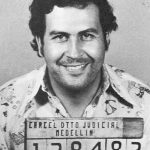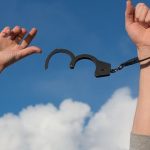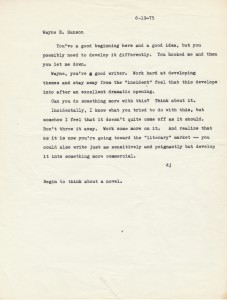
Pablo Escobar By Colombian National Police – Colombia National Registry; Colombian National Police, Public Domain, Wikimedia Commons
Suppose you were Pablo Escobar, the Columbian drug lord, back in the 1970s and wanted to increase cocaine’s market share. How would you proceed, what strategies would you use, what kind of activities would fill up your “to do” list?
While the coca leaf had been used for centuries by Native Americans of the Andes as a stimulant that wasn’t really a very lucrative market, so expanding into a rich country was a bright idea.
Item 1 On Pablo Escobar’s To Do List: Get Rich Americans Using Cocaine. Well, back in the 1800s Albert Niemann – a German chemist who also invented mustard gas – isolated the really strong stuff from the coca leaf and cocaine was used for surgery and to treat morphine addiction. It was the medication assisted treatment of the day: treat an addiction with another addictive drug. So what followed were wild claims of cocaine’s curative powers, a pick me up, added to all kinds of patent medicine and a drink called Coca Cola after the Coca plant. By the mid 1900s, suspicion grew that cocaine was addictive, so it was made illegal, and it was not readily available, so use dwindled.
Then in 1974 the New York Times Magazine touted cocaine as a way to get high without needles or addiction, a 1975 book on cocaine said that it was a good drug, and Newsweek Magazine ran illustrations of stylish men and women doing lines of cocaine, comparing it to champagne and caviar. Well, who wouldn’t love some cocaine?
And here we go back to Pablo Escobar’s “to do” list. Suddenly cocaine was “stylish and non-addictive” and so a demand was created, the warnings from the past were ignored, and demand exploded.
Item 2 on Pablo Escobar’s To Do List: Make $50 Billion. Pablo Escobar, who had been a minor criminal, now entered the smuggling business, expanded production and transshipping points, began paying off or murdering judges, police officers and politicians, and supply met demand and demand just kept growing. Turns out that cocaine is highly addictive, contrary to what was said in the New York Times Magazine, so everyone craved the next line of the drug. As a result, Escobar became one of the richest men in the world, worth an estimated $56 billion by 1990 at today’s exchange rate.
Item 3 on Pablo Escobar’s To Do List: Take Over the Country. In 1982, Escobar – who as part of his public relations campaign, gave money and soccer fields to the poor as well as greasing the palms of officials – was elected an alternate member of the Chamber of Representatives of Colombia , and became one of the most powerful men in the world. He controlled many public officials, ordered assassinations, sponsored terrorist attacks, paid townspeople for being lookouts and gave bonuses for killing police officers. He and his Medellin Cartel were unstoppable for a time.
Pablo Escobar’s Mistakes: However, Escobar made some mistakes, including causing the violent deaths of 20,000 people, and thousands more from addiction and crime, and he himself was murdered at age 44.
BigPharma
Now let’s take up BigPharma, those giant pharmaceutical companies around the world. First, BigPharma invented the street drugs we’ve been trying to just say no to. Big pharma created heroin (Bayer) and LSD (Sandoz). Merck pioneered the commercial manufacture of morphine, distributed cocaine and invented MDMA. OxyContin which started the latest “opioid crisis” was created by German scientists and pushed into society by Purdue Pharma. Crystal meth was first created in Japan and after World War II Abbott Laboratories won FDA approval for meth as a remedy for alcoholism and weight gain. Fentanyl, responsible for the majority of opioid overdose deaths, was invented by Janssen Pharmaceutica.
Now one shouldn’t suppose that BigPharma, being corporations and all, and under the regulation of the Food and Drug Administration and supervised by doctors and psychiatrists do anything as crude as Pablo Escobar. No sir, they are legit, they’ve learned a lot from Escobar, as you can see from what follows.
Item 1 on BigPharma’s ToDo List: Get All Americans on Drugs, Rich and Poor.
OK, so now BigPharma has all those addictive drugs just sitting there on the shelves, and so something has to change. So here comes the “To do” list again, this time from BigPharma. And while Escobar was just a two-bit criminal from a small undeveloped country, BigPharma is big, well-heeled, corporate, and from developed countries.
So here goes: First, opioids were being used mostly for severe pain, like terminal cancer, and doctors are very worried about prescribing opioids because of the danger of addiction. So as a result a lot of people are going around without drugs, and that’s got to change. So in 1996 Purdue Pharma ran some ads about a new opioid called Oxycontin that said it was a timed release opioid and was not habit forming, so doctors could feel good about prescribing it for pain. Well, the dam broke and doctors started prescribing it like mad for everything that might be a bit painful. Contrary to what Purdue said, people got addicted, and like all opioids they needed more and more to stay high until they overdosed and died. If their prescriptions ran out they went to the street for something else, like heroin. But all these overdose deaths looked bad and also got rid of users, so BigPharma invented drugs like Narcan and Evzio that block opioids and bring the overdoser back to life.
The psychs played a part in all this by categorizing addiction as a “chronic brain disease” so once you have it, you need treatment the rest of your life. So once you are brought back to life, you are put on other BigPharma drugs in something called “medication assisted treatment” or MAT. As you may recall, cocaine was originally used to treat morphine addiction, so BigPharma took this idea and updated it. Some of the drugs used for MAT include methodone, Buprenorphine and Naltrexone.
So the more people that die of opioid overdoses, the more everyone wants “treatment rather than prison” which means put the addict on BigPharma’s MAT drugs for the rest off their lives, and that just kicks up the profits, investors clean up, and everyone that counts is very happy.
The next thing is to use drugs that make you crazy – like LSD and Marijuana – which now has around 35 percent THC instead of the 3 percent it had back in the hippie 1960s – to treat mental illness. Then when you go crazy, you need antidepressants and antipsychotics, as long as we ignore the fact that the drugs you’re being treated with can make you paranoid, make you hallucinate, and make you go nuts and shoot lots of people in schools, churches and Las Vegas music concerts. But I digress.
Lots of states are now legalizing marijuana. George Soros has spent $80 million bankrolling campaigns to legalize weed, and guess what solution is prescribed for cannabis-induced psychosis? (It does cause psychosis in long-term users ) Psychiatric medications of course! And now Washington State and Colorado who were the first states to legalize weed, are at the top of the list in states needing mental health help for all the weed-smoking wackos going bonkers.
Remember the New York Times Magazine articles all aglow about the benefits and non-addiction of cocaine, the happy articles of how cocaine was very fashionable and like champagne and caviar? Well, BigPharma is taking a leaf from Pablo Escobar’s book, or the media are doing it on their own because they are dopers themselves, here are some of the things that are being promoted as good for you:
Psychedelics are now touted as cures for PTSD, depression, addiction, anxiety, eating disorders, smoking, OCD and crime, among others. Wow, what a miracle drug as long as you forget the 1960s. If you can remember the 60s you weren’t there except maybe for the flashbacks. And the military (remember MKULTRA and LSD testing?) is touting ecstasy as a PTSD treatment. It’s miraculous! And then when you go really crazy on LSD or ecstasy, what’s the treatment? Anti-depressants, anti-anxiety drugs, anti-psychotic drugs. And with government healthcare it’s not just the rich that get hooked and fucked up, it’s EVERYBODY!
OK, so no matter which addictive or psychosis-inducing drug you get hooked on, no matter if you got hooked on the street or in the doctor’s office, there’s another drug that’s legal that you can get with a prescription that is a “cure” for the drug you took before. And if the first three anti-depressants don’t work, there’s another one that might, and if that doesn’t work there’s always electroshock to turn you into a compliant vegetable so you can be given many many drugs by the nice attendants.
As a result, one in six Americans are on psych medications, from antidepressants to ADHD speed, to every kind of shit under the sun. The FDA — a government agency supposed to be the watchdog– accepts payments from drug companies to fast-track approvals, and the head of the FDA was once a consultant to some of the biggest pharmaceutical companies. And it’s all completely legal, even though half a million people have died of opioid overdoses from 2000-2015! So compared to BigPharma, Pablo Escobar was in kindergarten! So as a people, we’re circling the drain of addiction and a drugged existence, and BigPharma and the headshrinkers that smooth the takeover are making a killing.
Item 2 on BigPharma’s To Do List: Make a LOT of Money: OK, so while Pablo Escobar made a measley $50 billion, BigPharma makes in excess of $1 trillion with a T and half of that comes from the US and Canada. Now some of that is for real drugs that do good, like asthma medication, heart pills, insulin, and so forth. But 13% of the US population is on antidepressants and 13 percent on prescription opioids, and some 25 million Americans are addicted to illegal drugs. And with the psychs pushing the idea that everybody is crazy and “underserved,” and with states legalizing weed and Oregon decriminalizing hard drugs and pushing to legalize psychedelics, expect those numbers to grow pretty fast.
Depressed? Sad? Crazy? Too Happy? Impulsive? Can’t sit in a school desk for 8 hours? Legs restless? Have a child that doesn’t mind? Stressed? (Everyone is you know), Can’t read? Trouble in the bedroom? Like computer games too much? Into drugs? Well, if you answered yes to any of these, you are in luck! You or your kid is nuts and needs some drugs and BigPharma has them, and your insurance will probably pay for them. Meanwhile, BigPharma is pulling in a trillion in revenues which is much better than Pablo’s crew, but BigPharma CEOs are not making much, what with the overhead and all. Compensation of the top 20 ranges from a paltry $13 million to only $41 million per year, nowhere near Pablo’s $30 billion per year in personal income, but you know, BigPharma has to keep a low profile, pay off investors and such, while Pablo just shot anybody who got in the way.
OK, so here are the key points: Use one drug to get off another drug, legalize and then flood the country with drugs, hype the opioid crisis, increase funding for “treatment” which is just more drugs, and let users keep using through something called “harm reduction,” in which the government provides clean needles, safe spaces to shoot up, BigPharma provides clean heroin, or meth, or ecstasy, or whatever, and there’s plenty of Narcan and Evzio around to treat overdoses, and those drugs are all free to users. You try to get users into treatment, or course, with BigPharma MAT drugs and everything is rosy. Pablo would approve.
 Watching the bad news about drugs, one could think the United States is circling the drain on its way to nodding oblivion. “The War on Drugs has been lost” is the theme, and the alternatives range from legalizing recreational marijuana, following Oregon’s lead to “defelonize” hard drugs like heroin and meth, using LSD and other psychedelics to “treat” crime, PTSD and depression, implementing “harm reduction” programs which supply clean needles and a “safe space to shoot up” for addicts, switching addicts from street drugs to pharmaceuticals in something called “Medication Assisted Treatment,” and so on.
Watching the bad news about drugs, one could think the United States is circling the drain on its way to nodding oblivion. “The War on Drugs has been lost” is the theme, and the alternatives range from legalizing recreational marijuana, following Oregon’s lead to “defelonize” hard drugs like heroin and meth, using LSD and other psychedelics to “treat” crime, PTSD and depression, implementing “harm reduction” programs which supply clean needles and a “safe space to shoot up” for addicts, switching addicts from street drugs to pharmaceuticals in something called “Medication Assisted Treatment,” and so on.






Recent Comments